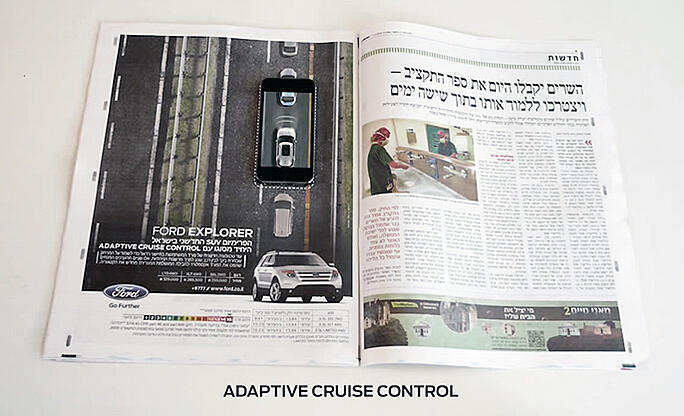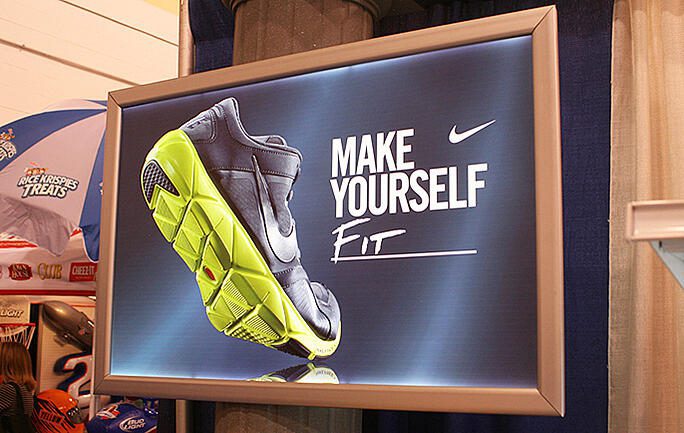In the world of retail, digital is the future, right?
As the day-to-days of both consumers and businesses become more entwined with the digital landscape, it is understandable that online channels are now more widely discussed than their print-based counterparts.
They can be showcased to a wider populous, and deliver more accurate data over how effectively campaigns are fulfilling their goals.
Email campaigns. Social media. Search engine advertising. Digital banners. Billions are spent by retailers year-round to establish and expand their foothold online.
With the evolution of digital channels showing no signs of slowing down, attention has drifted away from printed assets. To many, these materials are nothing more than relics of a bygone era. Fossils that continue to linger as the digital age continues its inevitable takeover.
So, is print about to go extinct?
Absolutely not. If anything, the power and potential of print in today’s climate is more potent than it has ever been.
While it remains crucial for retailers to get on board with the demands of this digital age, there is a lot of evidence out there demonstrating that an eye-catching, perfectly on-brand printed asset can leave a lasting impression on certain audiences in a way digital simply doesn’t.
Posters, brochures, banners, coupons and more offer a tangible way to connect with audiences of all ages, building brand awareness and capturing customer interest.
Here are a few examples of how relevant print marketing is, even in today’s primarily digital atmosphere:
Print adverts
While more and more organisations have cut down on their print advertising spend in favour of digital equivalents, the effectiveness of these more tangible ads shouldn’t be underestimated. In fact, as we will explore in the following section, print adverts can actually inspire stronger emotional responses than the stuff they see through their screens. Plus, clever incorporation of QR codes, social media integrations and more are allowing these printed materials to blend seamlessly into the digital landscape. In the example below, Ford used a phone-shaped outline with a QR code in the centre to display a series of short films to accompany their print ads.

Direct mail
Some will consider direct mail as old-fashioned. They would question why would you send something to someone’s door when you can connect with them instantly through email? However, the conversion rate of direct mail is up to ten times greater than that of an average email, illustrating that this physical, more personable style of reaching customers does pay dividends.
Over time, direct mail has also evolved to combine effectively with digital marketing techniques, such as the #20Helps campaign run by 97th Floor — an initiative that demonstrates the positive power of money by encouraging people to set aside $20 for good.
In a world where we rely on digital connections for practically every interaction, harnessing a physical $20 bill aims to bring back the tangible element of giving. Tangibility is something that a creative piece of direct mail has always done brilliantly.

Catalogues
Many brands and retailers, such as Nordstrom, Patagonia and Restoration Hardware have invested heavily in printed catalogues in recent years. This is because, as physical, long-lasting products, catalogues can stay with consumers long after any emails or social media posts are deleted. This increases their brand awareness whenever the consumer passes it in their home.
In addition, they present a more vivid, visual picture to customers on particular products and, through the incorporation of QR codes, promo codes and social media integrations, they can feed directly back into the digital landscape as well.

POS
There is a long-held assumption that the high street is on its last legs. While the explosion of e-commerce has impacted physical shops, they still remain popular destinations, and this means that POS materials still can have a dramatic impact on people’s buying habits.
These printed assets have their strongest appeal among impulse buyers at checkout locations, and as more and more retailers have focused on improving omnichannel experiences within their stores, these static, straightforward displays can provide an eye-catching alternative to more extravagant digital signage. Nike are a great example of a brand that knows the power of keeping things simple.

The science behind persevering with print
In recent years, a lot of research has been compiled on the effectiveness of printed media against their digital equivalents. It has provided some results that those who are devoted to the digital revolution might not expect:
Print gets more attention
Print materials are more likely to capture the attention of the reader for all the most important areas. Through these mediums, consumers focus more on product, price, offers, logos and CTAs.
Print is simpler to understand
It takes more cognitive power from a viewer of a digital advert to understand what they’re seeing, while print adverts are comparably far simpler. This means they have to keep the content and design of these a lot simpler to keep the viewer’s attention, while their printed counterparts can be more detailed.
Print elicits more emotional responses
As digital marketing demands more on the viewer mentally to interpret them, this typically leads to weaker emotional responses to these when compared to printed versions. This is particularly apparent among younger audiences, who might be overwhelmed by the number of digital communications they receive every day.
Print is more trusted
Because there are no risks of pop-ups or other distractions, and the general lack of trust that can surround online channels, print marketing is often considered more trustworthy and more official, especially by millennial audiences.
Print benefits brand awareness
As customers looking at print materials are more likely to recall the most standout elements of content in comparison to digital examples, this means consumers are subsequently more likely to remember the brand in the future.
To sum up, persisting with print can encourage:
- Better engagement between customers and your brand
- More trust from customers towards your brand
- Deeper, more positive emotional connections with customers
- Content that is read more intently and actively
- Lasting impressions on customers compared to fleeting digital adverts
Print and digital in perfect harmony?
Of course, this isn’t a call to disconnect all your computers, shut down your social media accounts and make print your main form of marketing. As noted earlier, the digital revolution shows no signs of slowing and is the primary means that people today consume information.
But, maybe the best results can be generated by finding a fitting balance between both the digital and printed channels. We highlighted earlier that printed materials typically capture the attention of consumers easier and elicit a more positive emotional response.
Well, beyond that, the use of print can then increase the effectiveness of future digital materials. Further research by PostNord into this relationship demonstrated that, if the first interaction a consumer has with a brand is through a printed asset, then the second interaction through a digital asset will evoke a more positive response than the other way around.
Consumers spend approximately 30 minutes on average reading physical mail, while 79% find it more convenient than reading emails (Source: USPS)
This illustrates the strength of a campaign that leads with print, to be further reinforced with digital advertising at a later date.
However, that doesn’t mean the reverse of this approach can’t be equally as effective in the right circumstances. Take Tesco Clubcard for example – they can use the information gathered from consumers using their online shopping list to motivate tailored offers through the post to these individuals or send special deals relating to upcoming weather conditions or events.
Alternatively, using product data gathered through online sources, this can spur other forms of personalised printed materials for individual customers or distinct groups. For instance, using up-to-the-minute data generated by your PIM/ERP systems, you can incorporate these into personalised letters, brochures and leaflets that will encourage users to make a purchase.
BAM by Papirfly™ can assist here as it allows for the seamless integration of your PIM/ERP solution. This means you can quickly create marketing materials with the latest, accurate data, ensuring everything produced is completely trustworthy and well-detailed, enriching the experience for your customers.
Above all else, finding an effective balance between print and digital materials, and ensuring these are delivered to customers at the right frequency and with the consistent presentation, puts you in a strong position to engage your audiences with the highest degree of success.
Power up your printed materials with BAM by Papirfly™
Declarations about the death of printed marketing materials have been greatly exaggerated. On the contrary – as we’ve noted throughout this article, in a landscape where people can often find themselves overwhelmed by the abundance of digital communications and need to escape from time to time, print can make a major impression and encourage a greater emotional response.
We hope that this motivates you to persist with print as part of your overall marketing strategy, as it can help differentiate your brand from those that have dived head-first into a digital-only approach.
To help you realise the full potential of print in your organisation, speak to us today about BAM by Papirfly™. Through our intuitive, intelligent brand activation platform, you will never have to worry about the quality and consistency of your marketing output, both printed and digital, and will be in a position to create more assets than ever before at a fraction of the cost.
Get in touch with our team and start the path to empowering your teams with BAM today.
